Input interpretation

ethylene
Chemical names and formulas
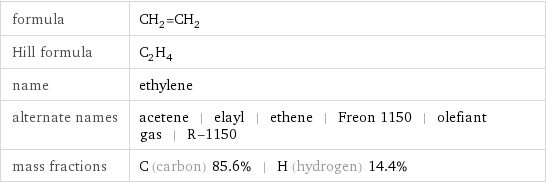
formula | CH_2=CH_2 Hill formula | C_2H_4 name | ethylene alternate names | acetene | elayl | ethene | Freon 1150 | olefiant gas | R-1150 mass fractions | C (carbon) 85.6% | H (hydrogen) 14.4%
Lewis structure
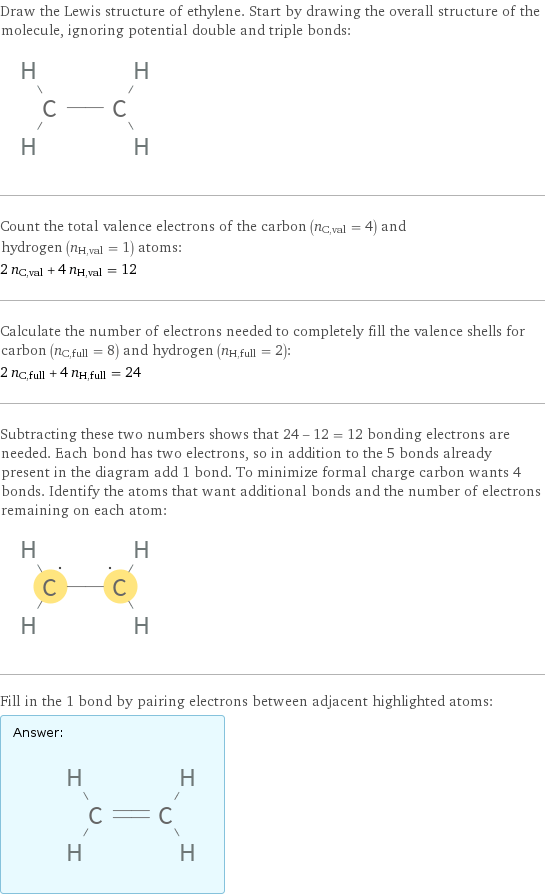
Draw the Lewis structure of ethylene. Start by drawing the overall structure of the molecule, ignoring potential double and triple bonds: Count the total valence electrons of the carbon (n_C, val = 4) and hydrogen (n_H, val = 1) atoms: 2 n_C, val + 4 n_H, val = 12 Calculate the number of electrons needed to completely fill the valence shells for carbon (n_C, full = 8) and hydrogen (n_H, full = 2): 2 n_C, full + 4 n_H, full = 24 Subtracting these two numbers shows that 24 - 12 = 12 bonding electrons are needed. Each bond has two electrons, so in addition to the 5 bonds already present in the diagram add 1 bond. To minimize formal charge carbon wants 4 bonds. Identify the atoms that want additional bonds and the number of electrons remaining on each atom: Fill in the 1 bond by pairing electrons between adjacent highlighted atoms: Answer: | |
3D structure

3D structure
Basic properties
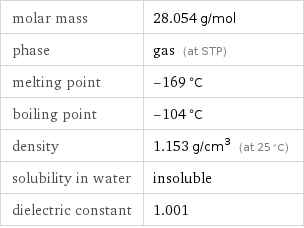
molar mass | 28.054 g/mol phase | gas (at STP) melting point | -169 °C boiling point | -104 °C density | 1.153 g/cm^3 (at 25 °C) solubility in water | insoluble dielectric constant | 1.001
Gas properties (at STP)
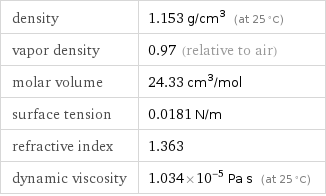
density | 1.153 g/cm^3 (at 25 °C) vapor density | 0.97 (relative to air) molar volume | 24.33 cm^3/mol surface tension | 0.0181 N/m refractive index | 1.363 dynamic viscosity | 1.034×10^-5 Pa s (at 25 °C)
Units

Thermodynamic properties
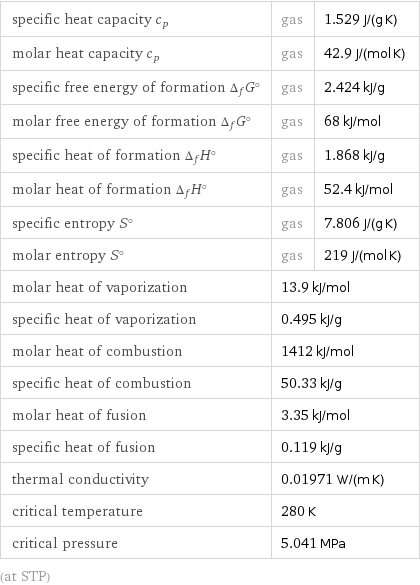
specific heat capacity c_p | gas | 1.529 J/(g K) molar heat capacity c_p | gas | 42.9 J/(mol K) specific free energy of formation Δ_fG° | gas | 2.424 kJ/g molar free energy of formation Δ_fG° | gas | 68 kJ/mol specific heat of formation Δ_fH° | gas | 1.868 kJ/g molar heat of formation Δ_fH° | gas | 52.4 kJ/mol specific entropy S° | gas | 7.806 J/(g K) molar entropy S° | gas | 219 J/(mol K) molar heat of vaporization | 13.9 kJ/mol | specific heat of vaporization | 0.495 kJ/g | molar heat of combustion | 1412 kJ/mol | specific heat of combustion | 50.33 kJ/g | molar heat of fusion | 3.35 kJ/mol | specific heat of fusion | 0.119 kJ/g | thermal conductivity | 0.01971 W/(m K) | critical temperature | 280 K | critical pressure | 5.041 MPa | (at STP)
Phase diagram
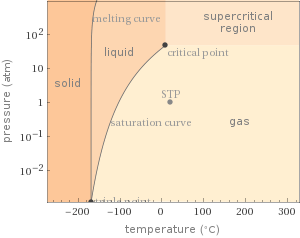
Phase diagram
Units

Chemical identifiers

CAS number | 74-85-1 Beilstein number | 1730731 PubChem CID number | 6325 PubChem SID number | 24857774 SMILES identifier | C=C InChI identifier | InChI=1/C2H4/c1-2/h1-2H2 RTECS number | KU5340000 MDL number | MFCD00008604
NFPA label

NFPA label
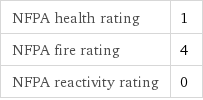
NFPA health rating | 1 NFPA fire rating | 4 NFPA reactivity rating | 0
Safety properties
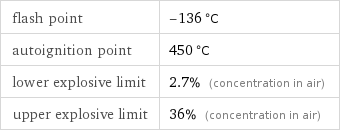
flash point | -136 °C autoignition point | 450 °C lower explosive limit | 2.7% (concentration in air) upper explosive limit | 36% (concentration in air)

DOT hazard class | 2.1 DOT numbers | 1038